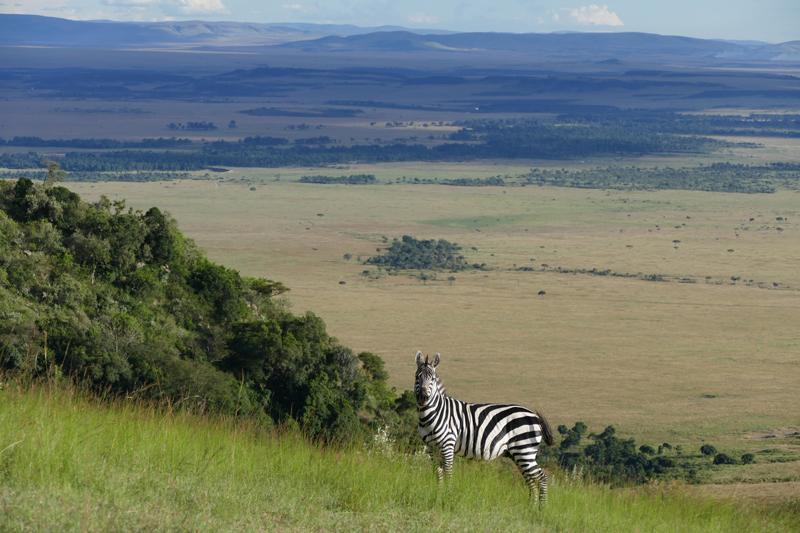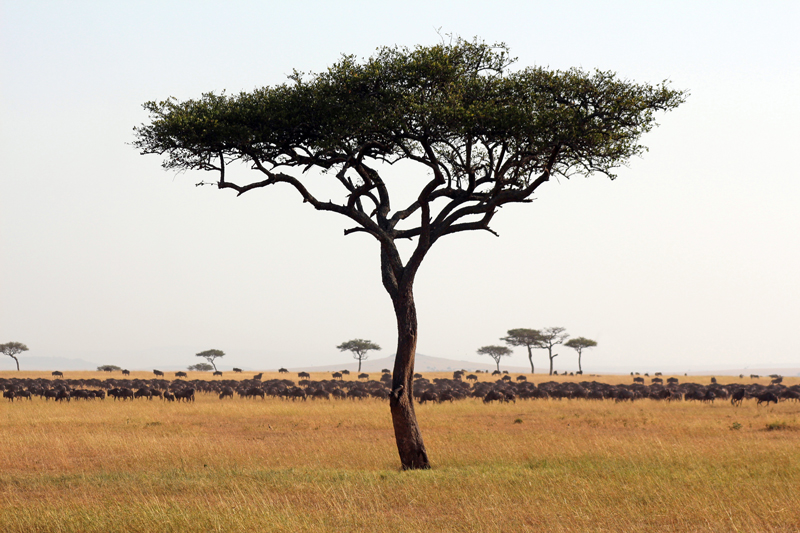The Great Migration Safari
The open plains of Kenya’s Masai Mara and Tanzania’s Serengeti offer unbelievable wildlife watching.
There can be nowhere else that has attracted wildlife film-makers in such numbers over so many years. The core ingredient of this wildlife haven is grass, which feeds the vast numbers of herbivores that call this region home.
Where there is prey, there are almost certainly predators – lion, cheetah, leopard, hyaena and even wild dogs roam the plains, whilst crocodiles wait patiently at the water’s edge for the unwary. Jackals scavenge or pick off the weak and very young, whilst smaller cats like serval and caracal go about their secretive lives. There are not many species of iconic African mammals that are not found on these plains.
However the plains are arguably best known for the great herds of wildebeest, zebra and gazelles that form the largest migration of mammals on earth. Over 1.5 million wildebeest are thought to follow their ancient routes, joined by several hundred thousand zebras and gazelles. Often zebras lead the way, eating the taller grasses, clearing the way for the wildebeest and gazelles that prefer the more nutritious shorter grasses.
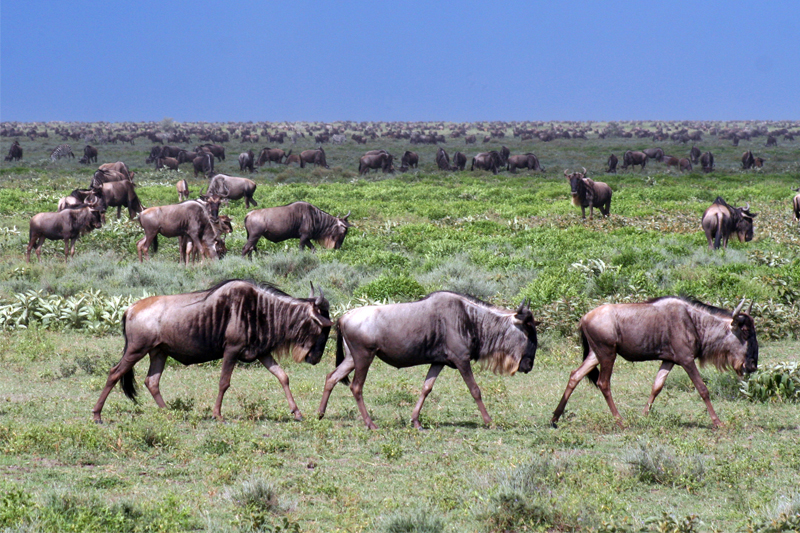
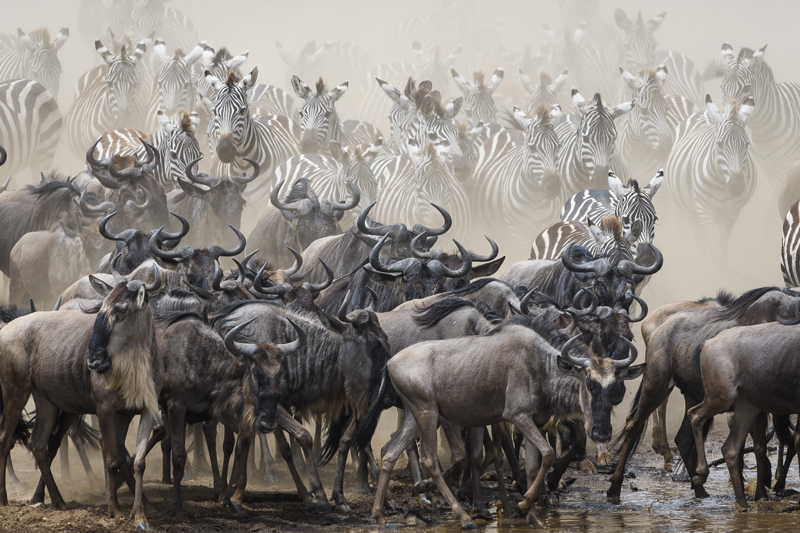
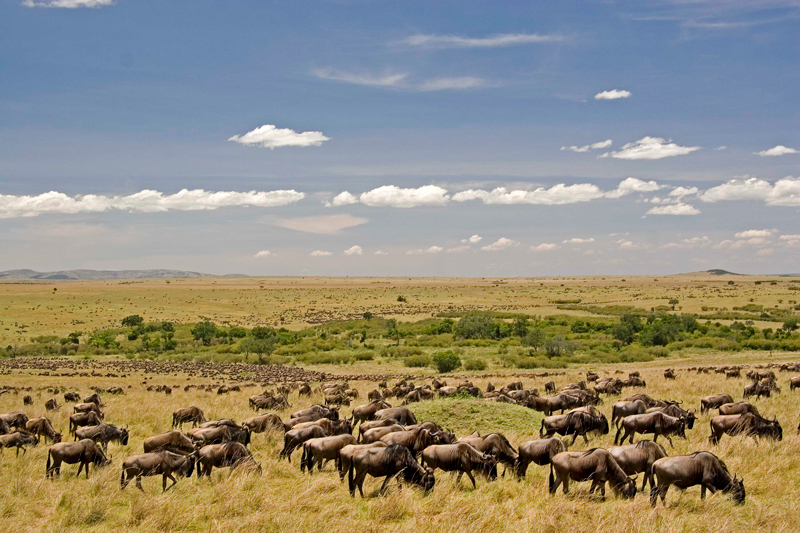
If the cycle has a ‘start and an end’ then a logical place to talk about first are the wide open short grass plains of the southern Serengeti. These plains, which stretch much further than the eye can see in all directions, do not hold much freshwater during the dry season (June to October). However, after the short rains in November and during the intermittent rains that continue through to the main rains in April/ May, they transform into a lush paradise with miles upon miles of sweet short grasses, with plenty of standing water in pools and streams.
The wildebeest and gazelles are drawn to this grazing paradise, usually arriving in large numbers in late November/ early December, and it is the logical place for them to begin the circle of life. Late January and February is the wildebeest calving season in the southern Serengeti and many thousands of calves are born each year. The calves look vulnerable at first, but are born so well developed that they can stand within minutes and run within the hour. Despite this evolutionary development, this is still a time of plenty for the resident predators who have an easy job of picking off the weak and newly born. A safari at this time of year will not only provide the chance to view the vast herds but also offer some great predator viewing and the potential for unusual and dramatic predator – prey interaction.
By April the main rains begin to fall more heavily over the Serengeti and the young calves that have survived the initial few months are stronger and ready to travel. Grass is plentiful and the herds spread out across the southern and central Serengeti plains, but as the rains dry up in May ancient instincts kick in and the herds begin to move north-west towards the permanent waters of the Grumeti River in the ‘western Serengeti’. The herds remain spread out during this period, and can often be seen around the Seronera River in the central Serengeti.
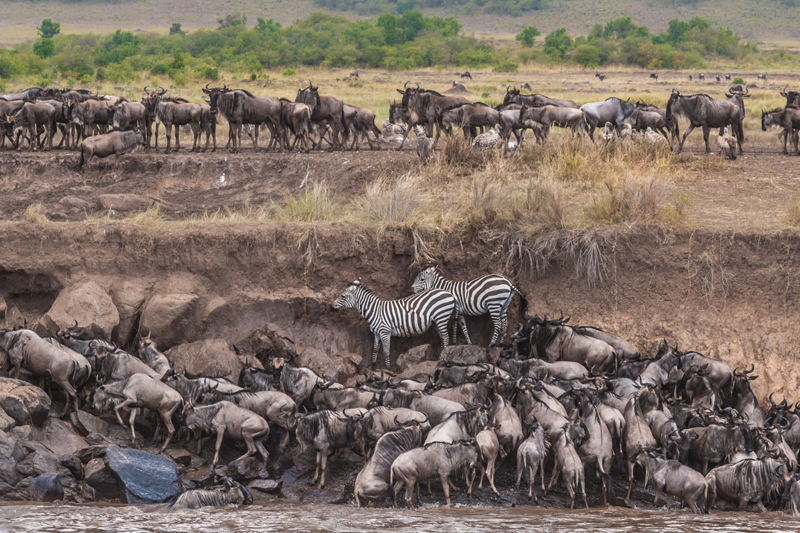
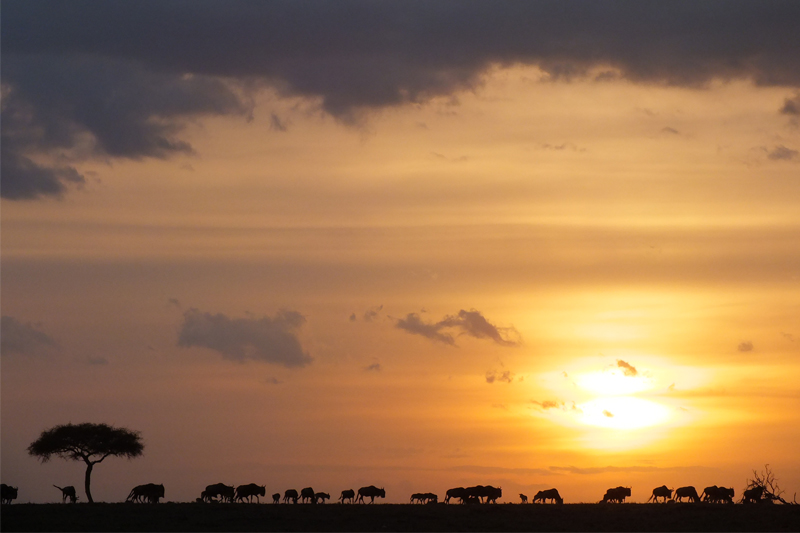
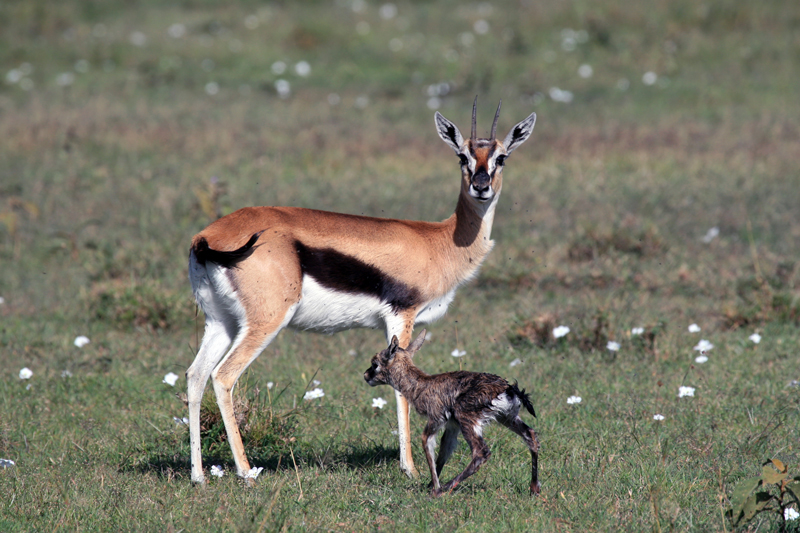
Through late June and July the herds continue to move northwards towards the Mara River region in the northern Serengeti. Across the border in Kenya’s Masai Mara, the arrival of the wildebeest is an annual celebration. The first herds of zebra and wildebeest usually cross into Kenya in July, though each year the timings of the migration will vary. Whilst a high percentage of the animals keep moving north into the Masai Mara in search of fresh pastures (and are joined by a smaller migration of wildebeest, known as the Loita population which comes across from the Loita Hills to the east), a good number of animals remain in the northern Serengeti where the Mara River cuts through rolling hills. It is therefore possible to witness the migration at this time of year in either the Masai Mara or the northern Serengeti.
In either location, this is when it is possible to witness ‘river crossings’ where wildebeest and zebra herds cross the brown swirling waters of the Mara River to reach fresh pastures. Even without predators lurking the crossings can be treacherous, with the weak struggling against the current and the steep muddy banks they often need to climb to exit the river course. To add to the drama crocodiles lie submerged in the water, whilst leopard and lion wait in ambush in thickets along the river’s edge. It really is a case of ‘running the gauntlet’.
Late July to mid-October is classic ‘migration season’ in the Masai Mara (and northern Serengeti) but by late October the herds are beginning to drift south in anticipation of the short rains which will breathe life into the short grass plains of the southern Serengeti. This is an unpredictable time of year and the herds spread out widely and often double back to spend more time in the northern regions around the Mara River. But once they make the decision to head south they can move quite quickly.
Providing the November short rains have not failed, December is usually the time when the herds arrive back in the southern Serengeti and the cycle begins again.
If you would like to speak to one of our specialists about a safari which includes seeing the great migration, please call us on +44 (0) 1787 888590 or email us your requirements via our Contact Us page.
For more information on the region please link through to our Masai Mara (& All Kenya Safaris) or Serengeti (& All Tanzania Safaris) pages.


